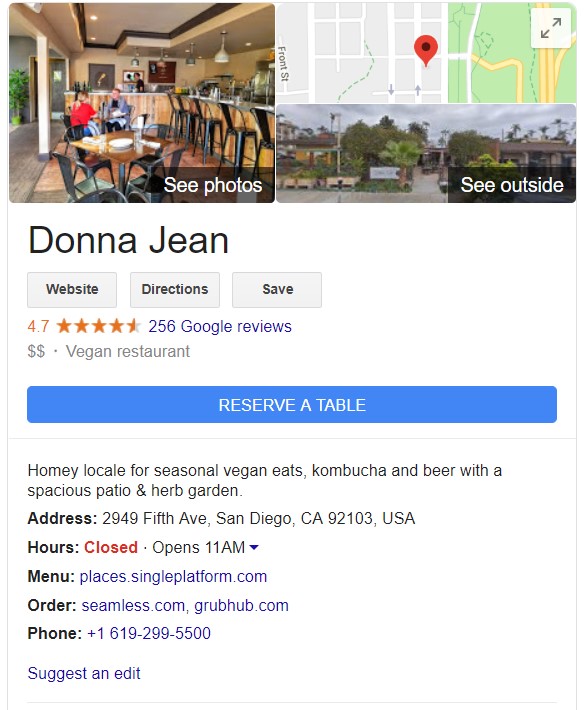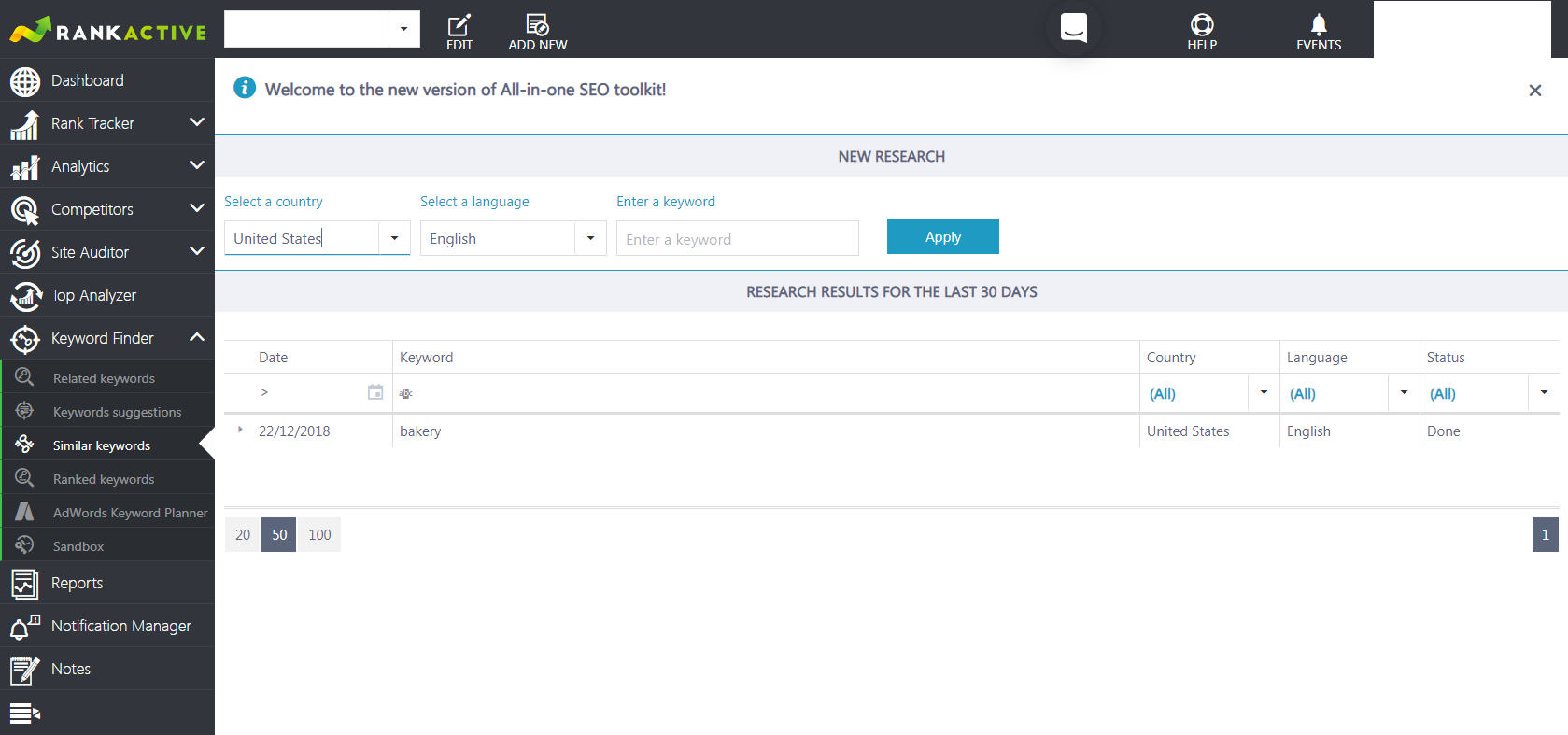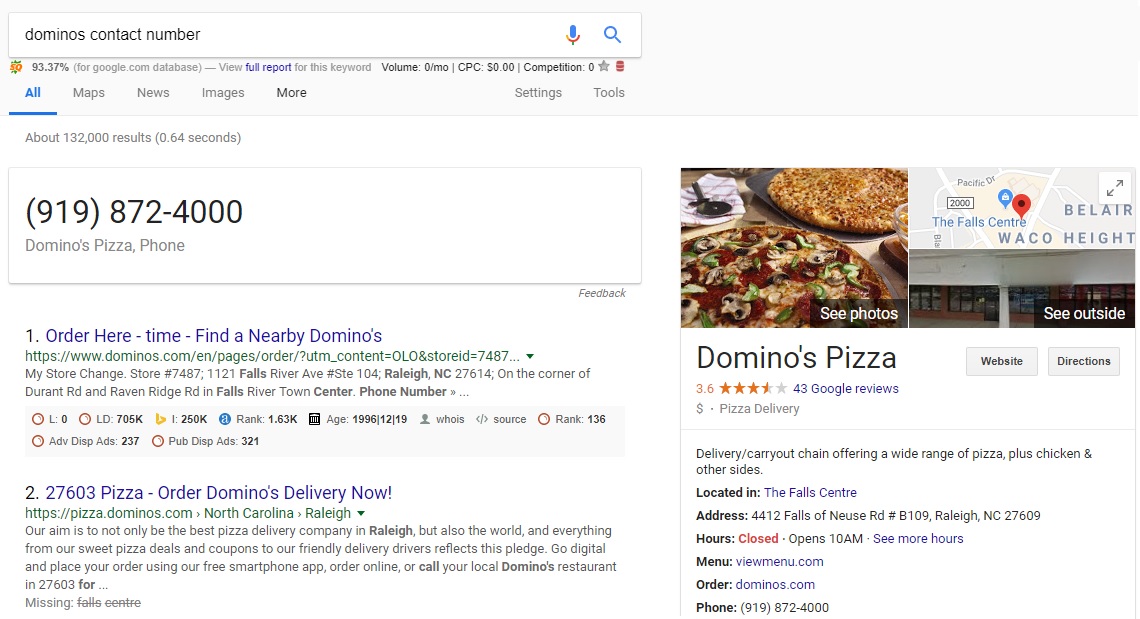10 Simple SEO Tips and Tricks for Your Local Business
3 January 2019 Leave a comment LOCAL SEO
Nowadays, you can hardly find a person who would search for a restaurant or a nearby gas station in the newspaper. No, we all open Google Search and find all information there. But what should a company do to be found? A well-planned SEO strategy has all the answers.
Today, we’re talking about local SEO and its main features. We’ve made a list of 10 points you can’t miss in order to broaden up your audience. This article will be helpful for any local business owner, be it a nail salon or a bookstore.
1. Update the NAP Data
NAP is basic information about your company, including its name, address, and phone number. This info must be consistent everywhere on the web where a customer can find information about your business.
First off, you should make a list of all platforms, such as your website, TripAdvisor, Booking.com, etc., where the contact information is displayed. Then, create a standard of this information. For example, if there is the LLC abbreviation included in your company’s name, it should be added everywhere on the web. This tip looks very simple, but the NAP includes the most important information for your business to be found offline. There’s a place where customers will likely see NAP earlier than on your website – it is Google My Business. Let’s see how it works.
2. Create Google My Business Account
And even if you have one, make sure it is fully optimized for web users. You can create an account here: www.google.com/business. If your business is located in several places, each one should have its own account.
Here’s how your business can be presented by Google if you have Google My Business account:
As you can see, Google displays all of your NAP information and a little bit more. These are a few tips for Google My Business optimization:
- Check your company’s name once again. It’s not that hard with one location only, but if there are many of them, there can by some typos or punctuation mistakes.
- Add a description and be creative. Tell about what you do with enthusiasm so that others would like to come and see your business offline.
- Add and check all the contact information: an address, a phone number, open hours (just like in the example above).
- You also have an opportunity to add some images. Depending on the business, customers would like to see the interior or exterior design, photos of dishes or products. With the target audience in mind, prepare a pack of high-quality images.
- Use Google Posts to inform about hot news. Thanks to the fresh information, your audience would see that your business is thriving, and customers get an opportunity to know your company closer.
3. Use the Right Keywords
Now when all information is up to date, the second step is to be found, and the right keywords would come for help. In this case, start thinking like your customer. For example, you feel hungry and open Google to find some vegan food. You would probably type “vegan food Seattle”, and so does your audience. Make sure you include your city’s name in the following items:
- Title tag
- Description
- Heading (H1)
- The main text
- URL
If you’re a little confused with what keywords to use, turn to SEO tools. RankActive helps you find long-tail keywords with the Keyword Finder. Go to the Similar keywords subsection where you can put necessary parameters such as a language, a country, and the main keyword. The tool will give you a list of useful keyword ideas.
4. Improve Internal Links Structure
Let’s say a user has found you in Google and now goes to your website. Will he feel comfortable with the platform’s navigation? To give a positive answer, you should take care of internal linking.
An internal link is a connection created between different pages of one website. It can give the following advantages to a business:
-
- It helps with website navigation: users can get to a certain page within several clicks. If linking is well-structured, appearing on a new page becomes an intuitive process – a website gives necessary hints.
- If every scenario on your website is thought out, both users and search spiders will be able to use a clear path in order to achieve their goals. In particular, search spiders will show more pages of your website in search results.
- User sessions become longer. And it’s not surprising because visitors will know exactly where to go to find the information they need. They would like to know more or come back again because they’ll remember a smooth experience on your website.
5. Create Structured Data Markup
Data markup is a way to show the most important content from your website right in search results. For local businesses, it looks this way:
Users who search for local products and services want to find information as soon as possible, and providing them with such links allows appearing on the page right away (with no need to visit the main page). Here you can put all the crucial pages which have the most important information: menus, photo gallery, brand story, additional services, etc. To add data markup, you will need help from professional developers. As always, Google has provided a few tips for local business platforms.
6. Focus on Local Content
The content on your website should meet the expectations of your target audience. If you write articles on general subjects such as industry reviews or trends, people from another country may be interested in it, but they won’t come to your shop or restaurant. Instead, you can focus on the local content.
Local content includes:
-
-
- Description of events nearby.
- Local news.
- Industry news, which are unique for your area.
- News about your business.
- Answers to common questions: “Where I can go to buy books in San-Diego?”
-
Soon, your customers will be glad to receive a newsletter from you as your website becomes an authoritative local source of information. It’s great not only for SEO but also for your PR activities.
7. Make Your Website Fast and Mobile-Friendly
Optimization for mobile devices plays one of the major roles in a well-prepared SEO strategy. It often happens that we search for something on the go: in public transport or in a traffic jam. People ask “What’s near me?” and plan their time according to search results. Your website should be at the beginning of the list.
Here are a few tips for mobile responsiveness:
-
-
- Bigger fonts for comfortable reading.
- Limited amount of visual content – you should focus only on the most important information to display it on a mobile screen.
- Quick website loading (around 2-3 seconds)
-
To make sure your website is mobile-friendly, try out the test provided by Google. You should also consider mobile-first indexing, another biggest trend for 2019, which has a direct influence on your ranking.
8. Get Reliable Backlinks
Backlinks (also referred to as inbound links) are links leading from other online platforms to your website. Using them can either help your business reputation or ruin it, so first you should start with a list of authoritative sources where you can place a backlink.
Usually, any business owner has his personal network – this is where you should start your search (for example, the Chamber of Commerce, associations of traders, manufacturers, resellers, etc.).
The most popular ways to get backlinks:
-
-
- Partnership and sponsorship. You may start offline with sponsoring an event important for the industry. This event is not only a good place to leave links to your company – here you can meet your future business partners.
- Scholarships. Some companies can spend some time and money on providing a scholarship for students in their geographical location. If scholarships reflect the vision of your business, this is a great option for a backlink on .edu or .gov domains. These sources are considered to be highly authoritative for lots of customers and can help you improve the image of your business.
- Guest blog posting. You may also go online and become a guest blogger writing articles for people from the industry. The more quality you provide with such articles, the more buzz is created around your business.
-
9. Get Reviews and Respond to Them
Google My Business mentioned above allows customers to leave their reviews, and this is a great opportunity for local companies. The thing is, the more positive reviews you have, the higher you appear in the search. Moreover, Google creates lists of places to visit (for examples, for foodies), and it puts places with positive reviews to the top of the list.
These are the major platforms where you can gather reviews:
-
-
- Trip Advisor
- Yelp
- FourSquare
-
Another useful practice is to answer all the reviews if possible. Of course, marketers advise you to address negative reviews, and we agree with that. Any negative review is a chance to improve some process in your company. Thanks to the Internet, we can discuss an issue with a person who left a negative comment, but answering positive reviews is also a way to build solid relationships with your customers.
10. Use Tracking Tools
If you make an effort in SEO, you want to know how it affects your business. The best advice, in this case, is to use tracking tools like RankActive. It gives you an overall idea of your rankings in any browser. As a local business owner, you can track progress in Google Maps and Google Map Pack.
You can start your campaign in RankActive by choosing a specific language and location and get real-time reports. This is how Ranking Overview looks like:
It’s a helping tool for SEO agencies too. If you work with one of them, using RankActive will allow you to check the agency’s work and always be on top of things.
Become Well-Known with Local SEO
Even the audience of local companies uses the World Wide Web to choose the best on the highly-competitive market. The 10 tips we’ve described above should be a strong motivation for you to start acting immediately. Google wants to provide all users with the best experience, and your goals must be the same to get the highest rankings.
With Google My Business, link building, mobile responsiveness, and relevant keywords, you will soon see how your business grows. Want to know the exact numbers? It’s not a problem with the RankActive tool gathering necessary ranking data for you. Your website’s traffic, visibility, the number of ranked pages and keywords will be always in sight.
Tags: local business, local seo
Like this article? There’s more where that came from.
- YouTube Hacks Your Online Marketing Agency Can Implement to Boost Video Rankings
- When Less is More: Why We Decided to Remove Backlinks and Link Manager Features
- How to increase your CTR using Schema.org
- How to Get Out of Google Sandbox and Do It Quickly?
- Geolocation Redirect 101: How to Secure Your SEO Localization Efforts?
- Your Ultimate Guide to SEO Reporting with RankActive
- Your 7-Step Guide to Increasing Page Speed
- How to Do SEO Competitor Analysis? Your Checklist for 2019





